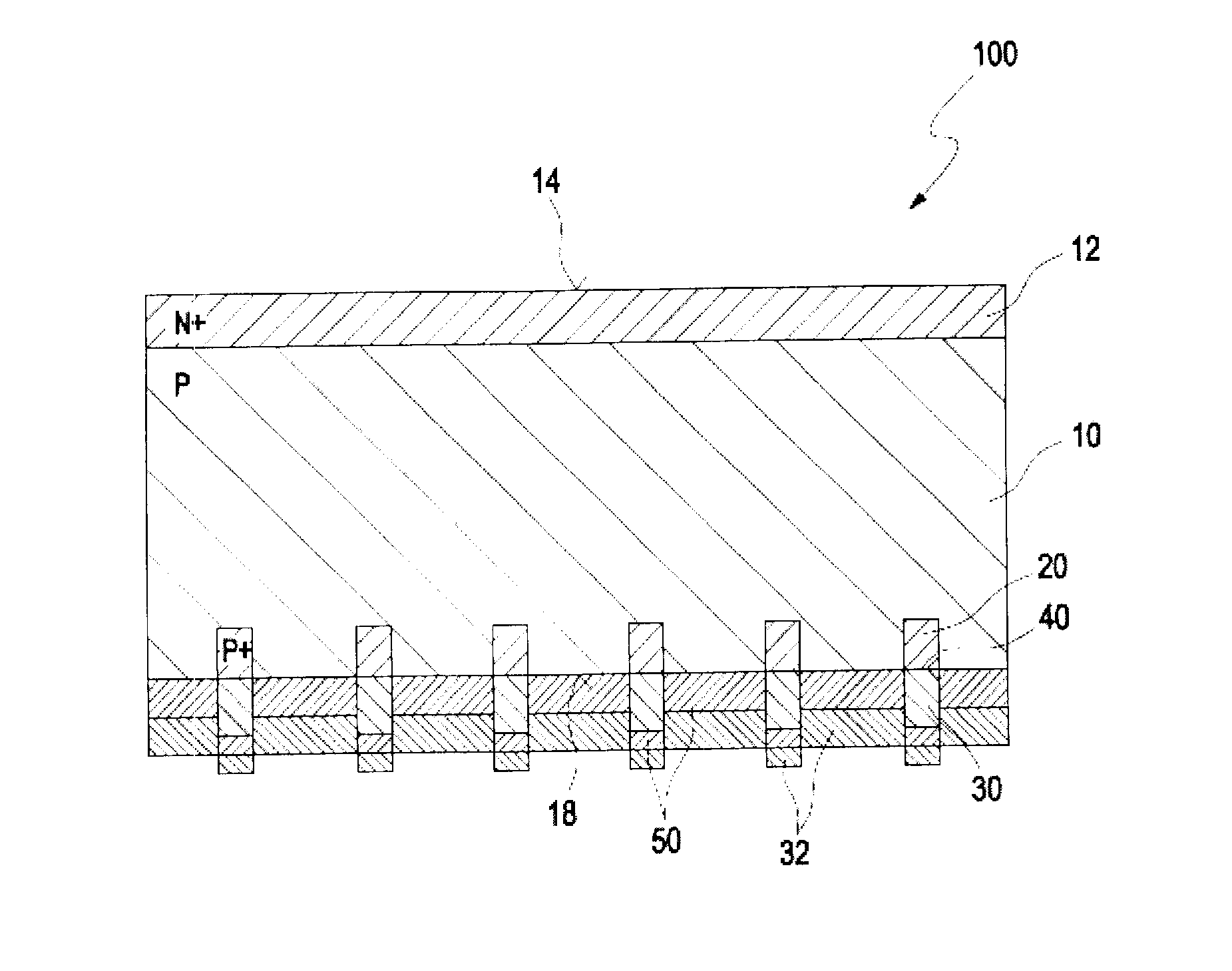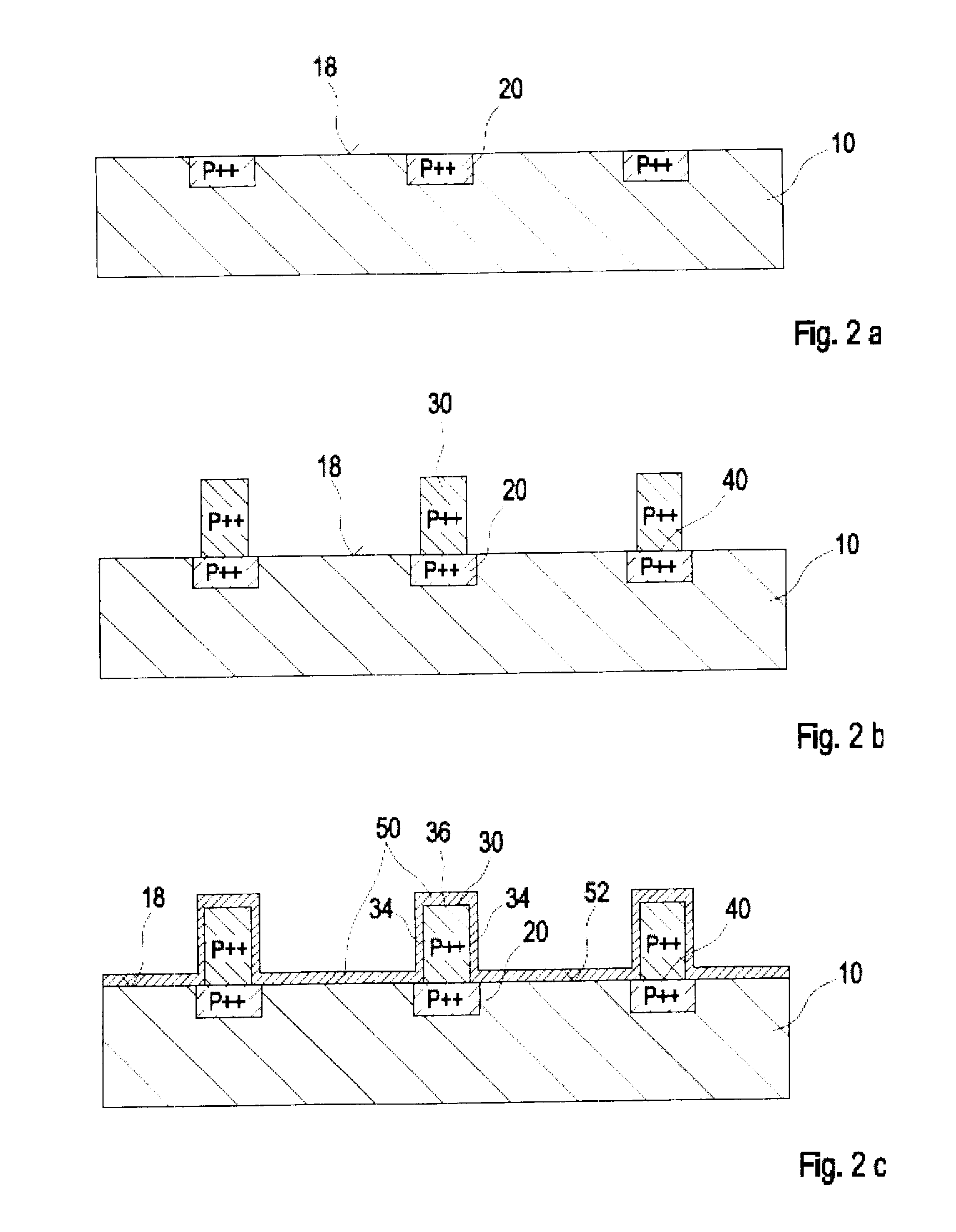Manufacturing process for making photovoltaic solar cells
- Summary
- Abstract
- Description
- Claims
- Application Information
AI Technical Summary
Benefits of technology
Problems solved by technology
Method used
Image
Examples
Embodiment Construction
[0030]FIG. 1 depicts a cross section of a solar cell 100 manufactured with the inventive manufacturing process. The solar cell 100 comprises a semiconductor body 10, where the bulk material is typically lightly p-doped and a high doped n+-layer12 on its front surface 14 forming a p / n junction close to the front surface 14.
[0031]On the rear side 18 of the semiconductor body 10, localized high doped (p++) areas 20, i.e. boron doped, are arranged in the semiconductor body 10. On top of the high doped areas 20 metal contacts 30 are formed having an interface 40. A passivation layer 50 is arranged between the localized metal contacts 30. On top of the passivation layer 50 a metal layer 32 is arranged, covering the passivation layer 50, as well as the metal contacts 30. As a result, portions of the passivation layer 50 that are arranged on the metal contacts 30 are embedded in the metal layer 32.
[0032]FIGS. 2a through 2c illustrate first process steps for forming metal contacts 30 on high...
PUM
 Login to View More
Login to View More Abstract
Description
Claims
Application Information
 Login to View More
Login to View More - R&D
- Intellectual Property
- Life Sciences
- Materials
- Tech Scout
- Unparalleled Data Quality
- Higher Quality Content
- 60% Fewer Hallucinations
Browse by: Latest US Patents, China's latest patents, Technical Efficacy Thesaurus, Application Domain, Technology Topic, Popular Technical Reports.
© 2025 PatSnap. All rights reserved.Legal|Privacy policy|Modern Slavery Act Transparency Statement|Sitemap|About US| Contact US: help@patsnap.com



